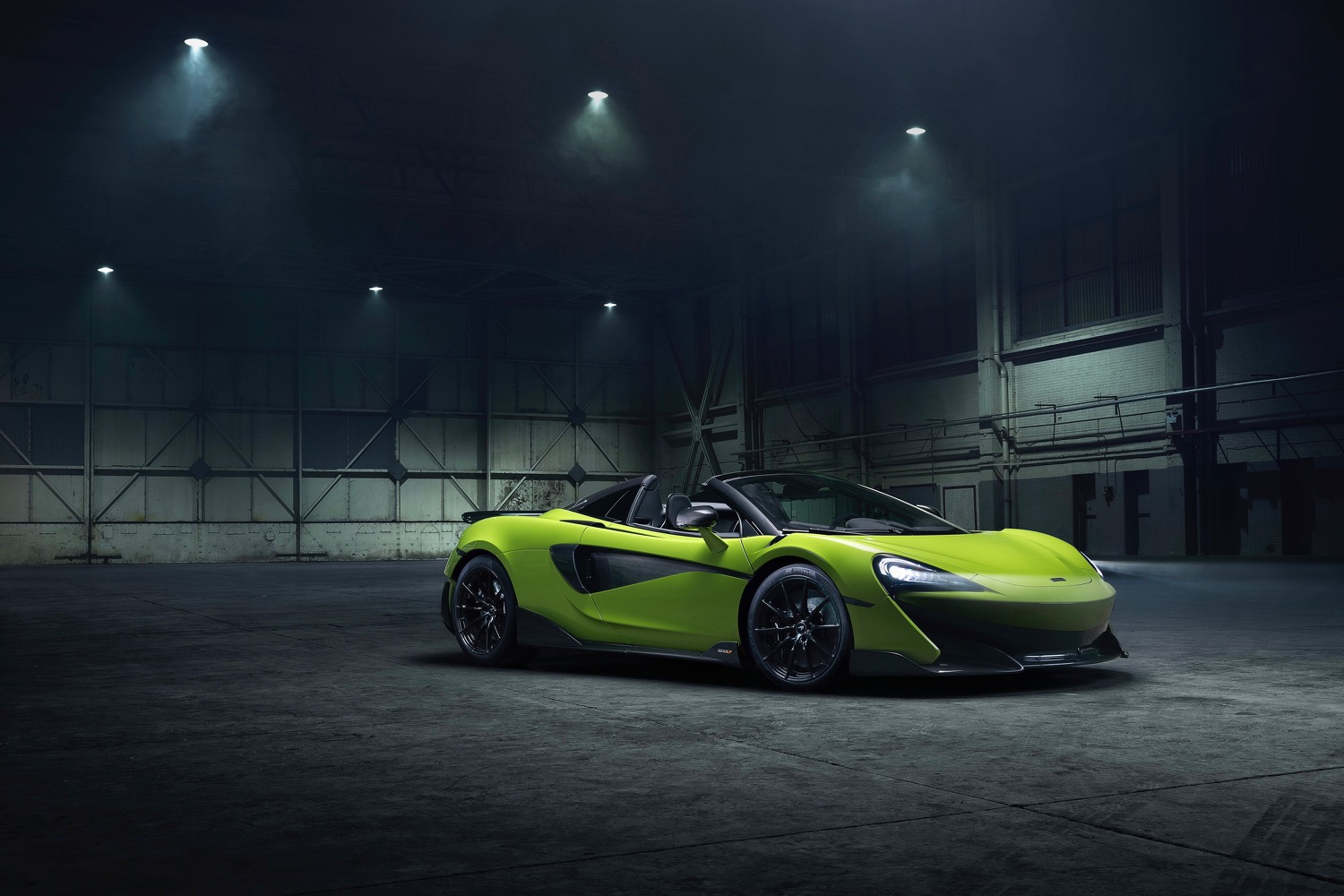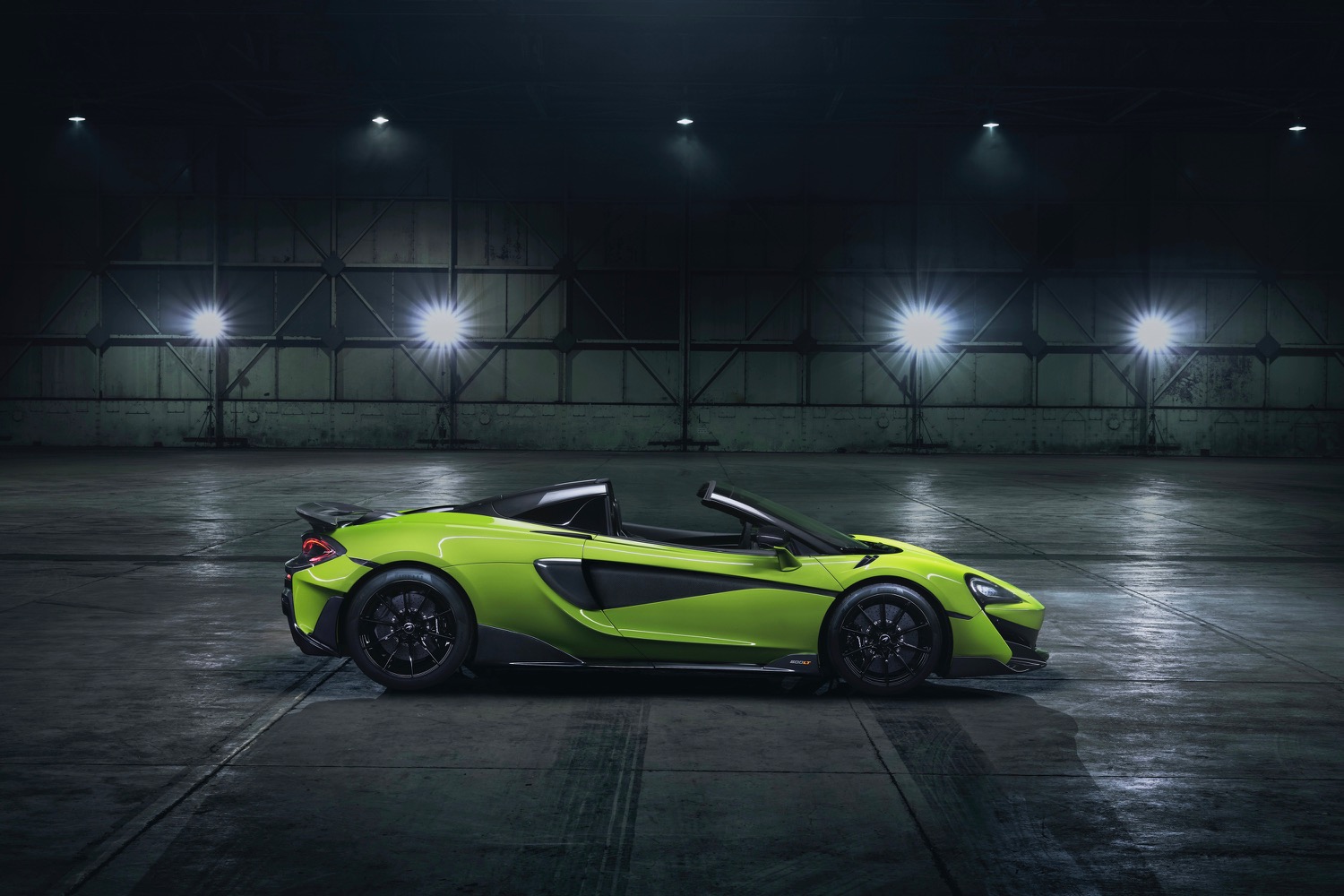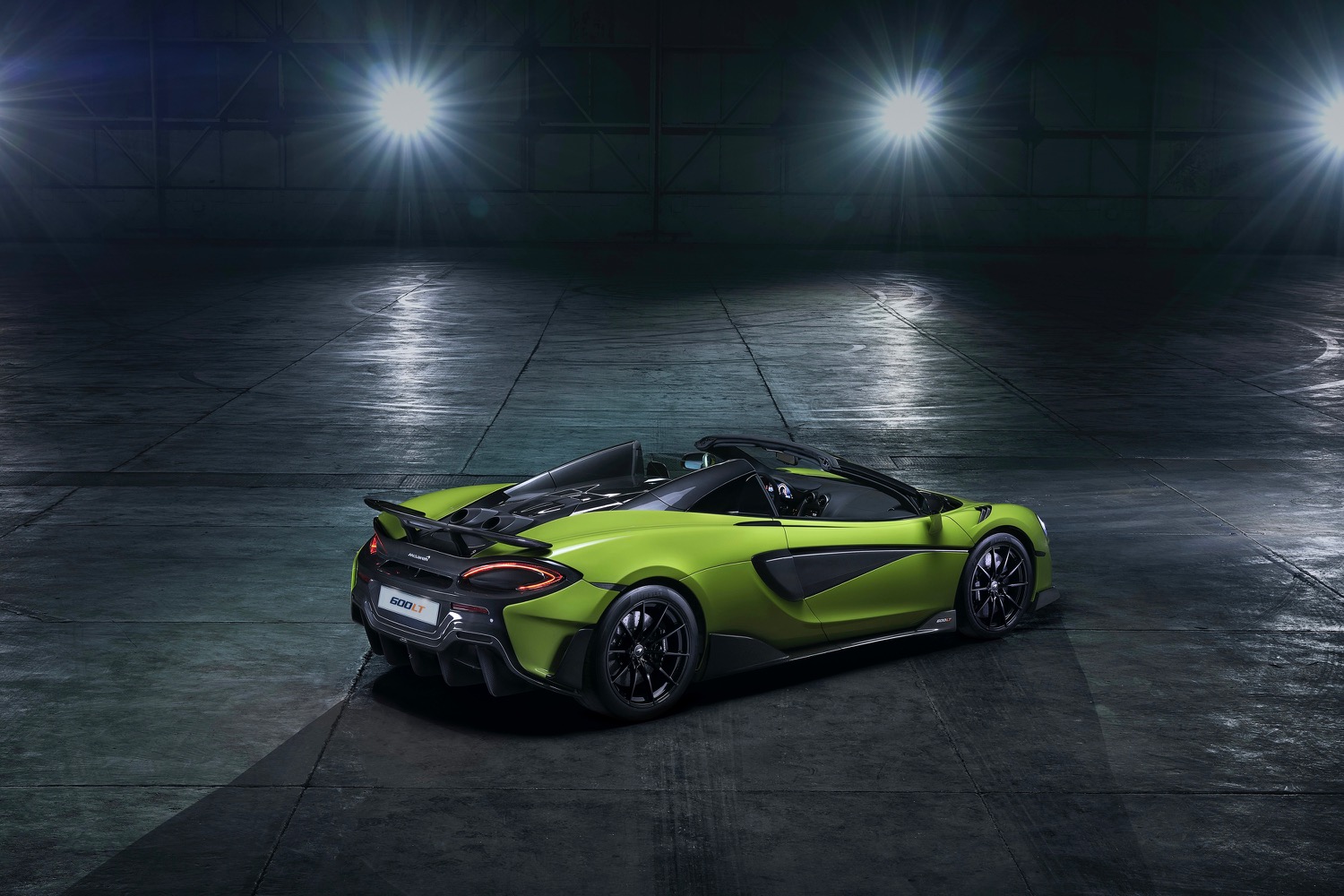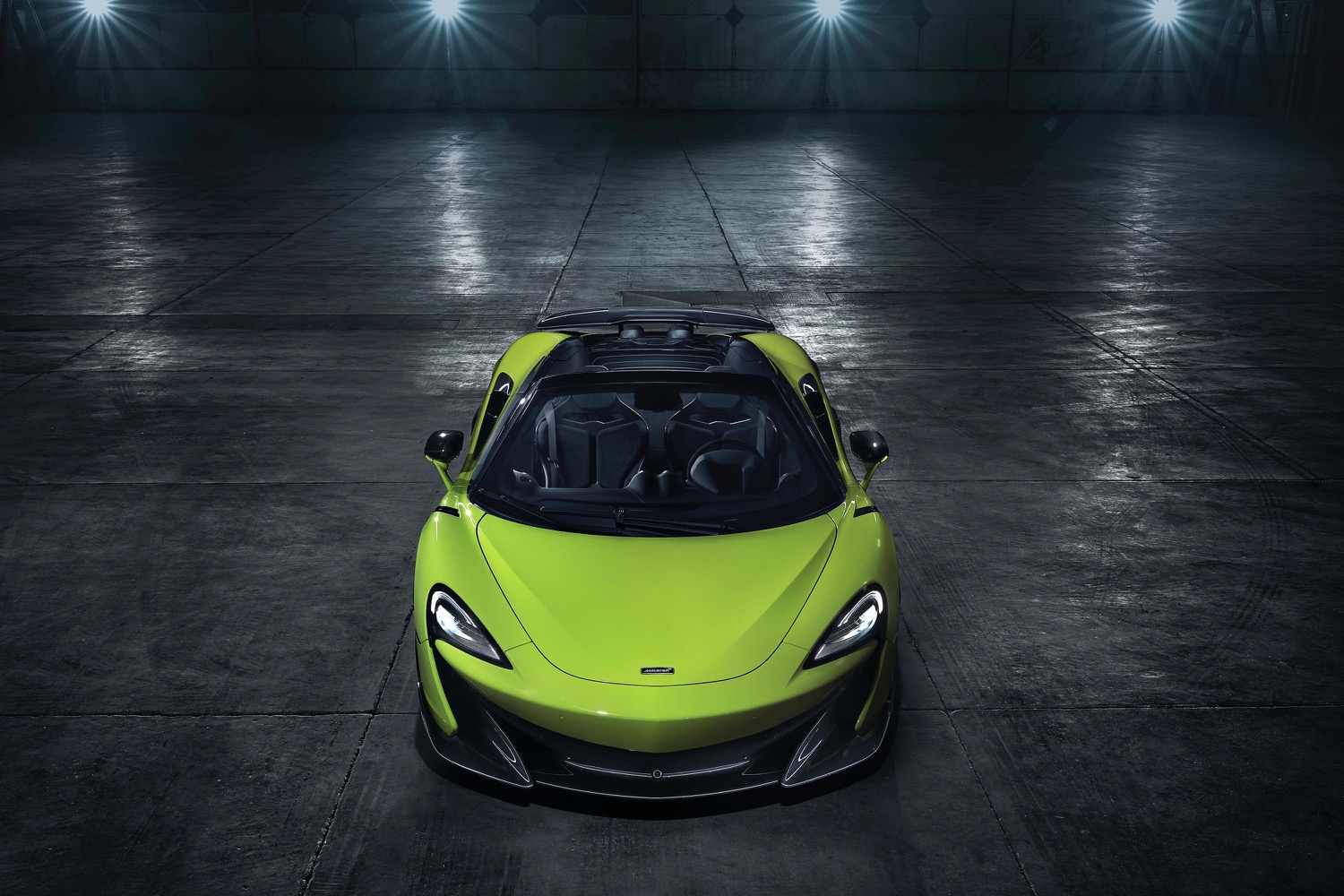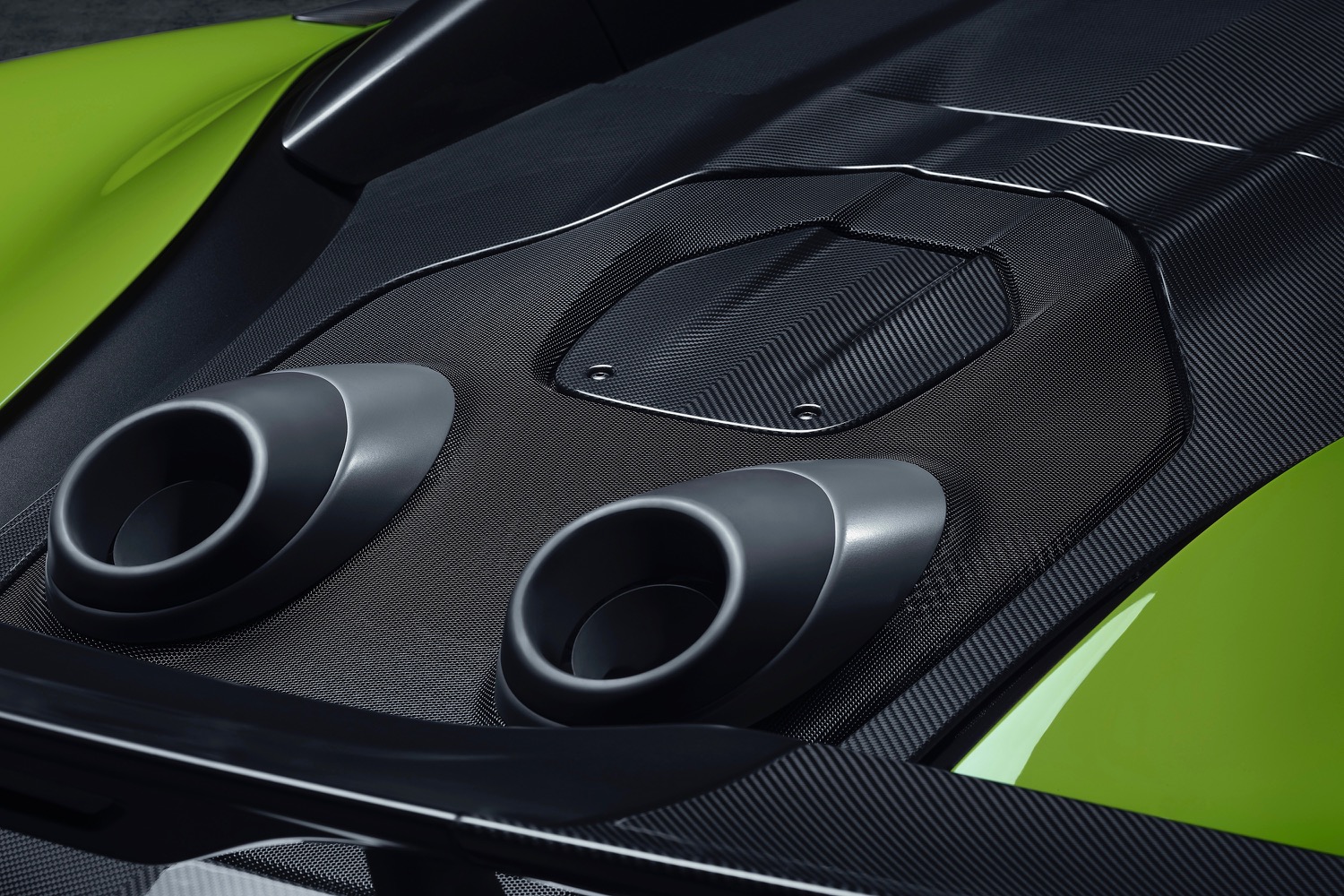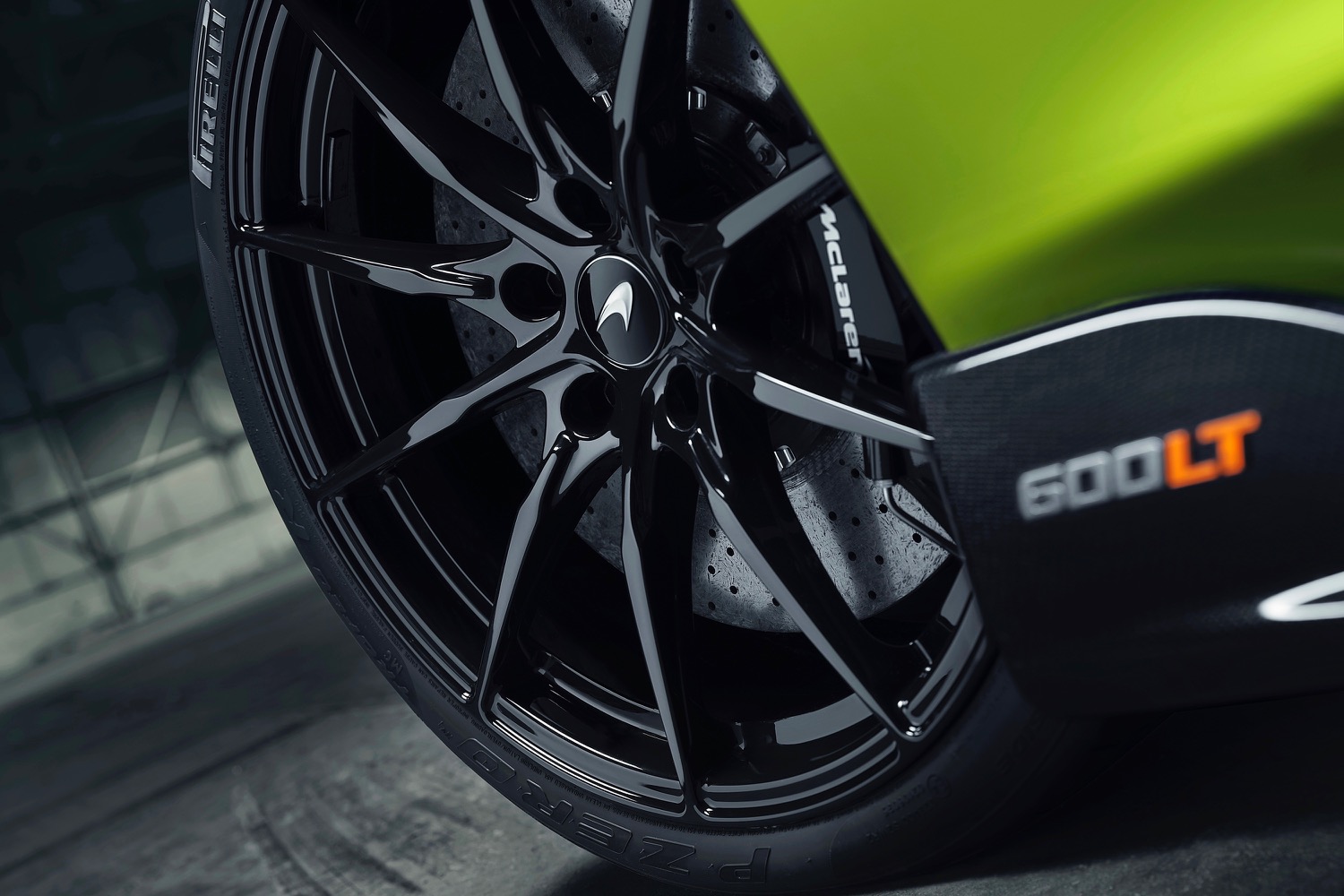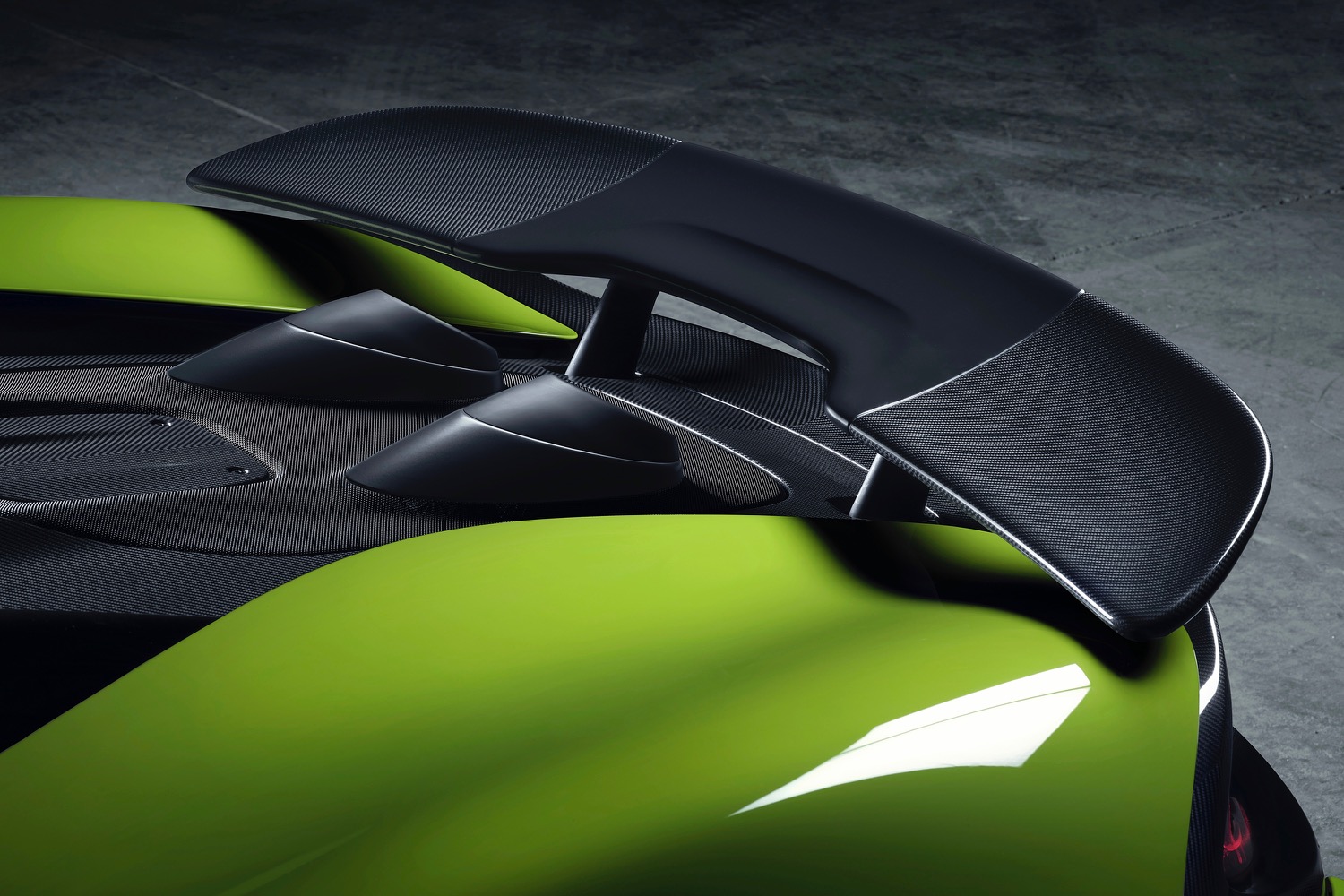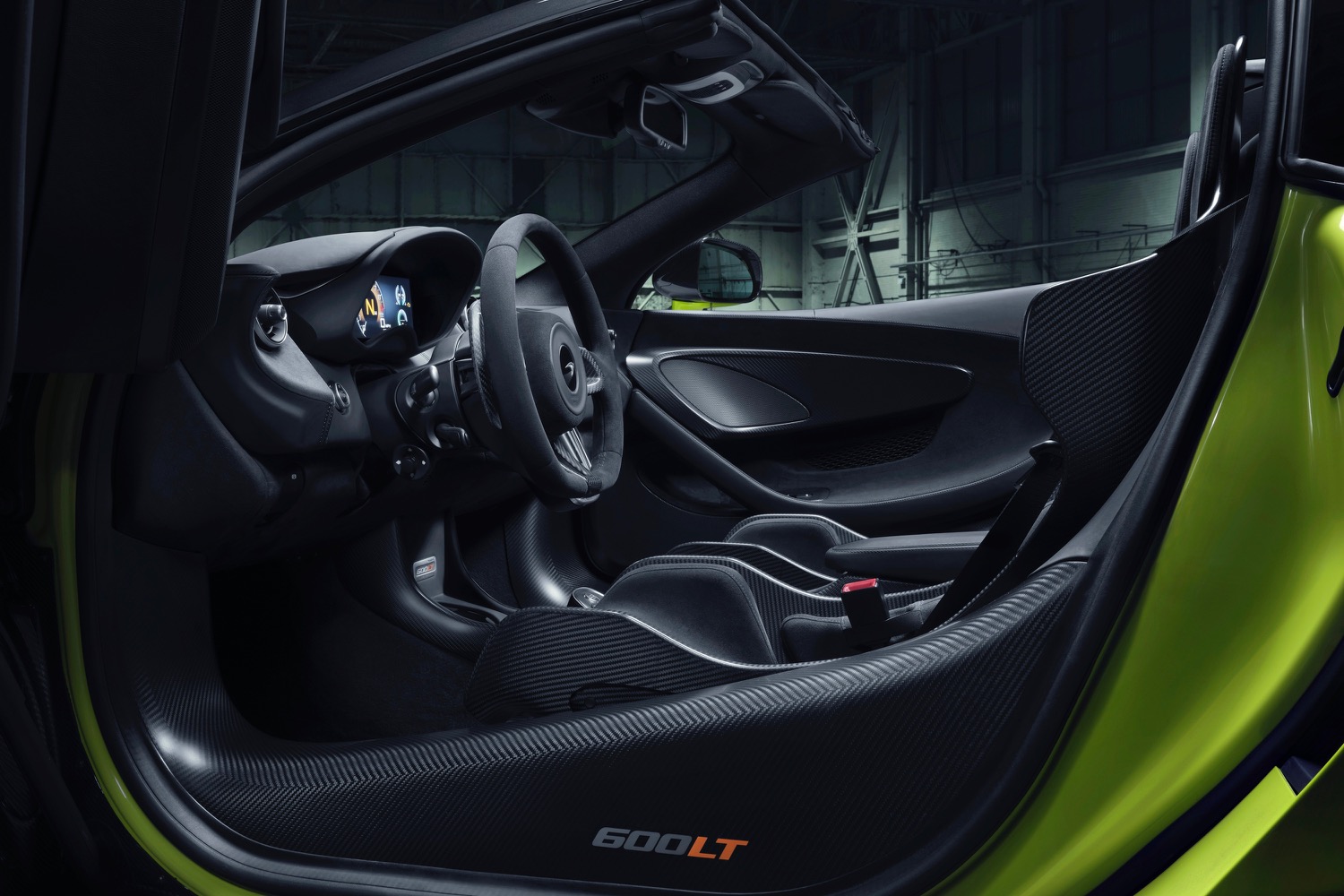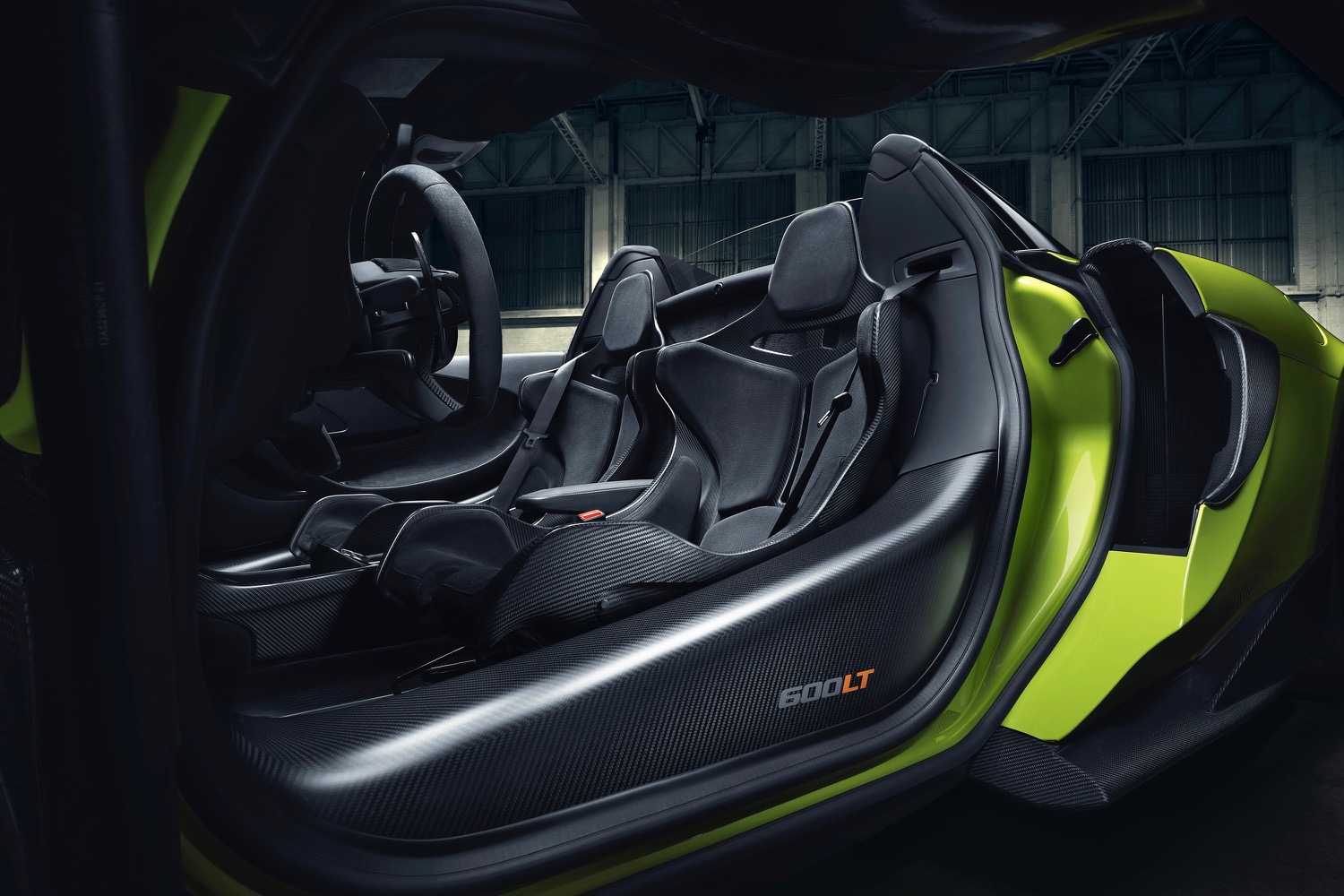When McLaren unveiled the 600LT — a more hardcore version of the 570S — it was only a matter of time before a convertible Spider version showed up. The McLaren 600LT Spider is the perfect car for getting a suntan in a hurry.
As before, “LT” stands for “Longtail,” a reference to the McLaren F1 GTR Longtail race car of the 1990s. That car had lengthened rear bodywork meant to improve aerodynamics, and went on to become of McLaren’s most successful racers. McLaren revived the Longtail name in 2015 for the 675LT, which was based on the now-defunct 650S. From that point on, LT became the designation for higher-performance versions of existing McLaren models.
The Spider has more power and less weight than the 570S Spider it’s based on. The mid-mounted, 3.8-liter, twin-turbocharged V8 produces 592 horsepower and 457 pound-feet of torque, increases of 30 hp and 14 lb-ft. The “600” in the car’s name refers to output in metric horsepower. As in the 570S, drive is to the rear wheels through a seven-speed dual-clutch transmission. McLaren claims the 600LT Spider will do 0 to 60 mph in 2.8 seconds, and reach a top speed of 201 mph.
McLaren claims to have shaved 220.5 pounds of weight compared to the 570S Spider, but only with the optional ($22,090) MSO Clubsport Pack. This adds carbon fiber racing seats from the McLaren Senna, titanium wheel bolts, and other lighter-weight parts. Without that option package, the difference between the two cars is just 5.0 pounds.
One notable weight-saving measure is the top-exit exhaust system from the 600LT coupe, which has the added benefits of looking really cool and making a more ferocious sound. The power hardtop lowers in just 25 seconds, according to McLaren, further enhancing the aural experience. Truly committed owners don’t have to listen to anything else: McLaren will remove the audio system (and climate control) to shed additional pounds.
The Spider also gets many of the same aerodynamic upgrades from the 600LT coupe, helping generate more downforce to stick the car to the track. McLaren also made numerous tweaks to the chassis, including recalibrated dampers, firmer engine mounts, quicker steering, and upgraded brakes.
The McLaren 600LT Spider is available to order now, starting at $256,500. McLaren said production would be limited, but declined to quote an exact figure. The company also did not say when deliveries would begin, but expect the first cars to arrive stateside in time for convertible season.
